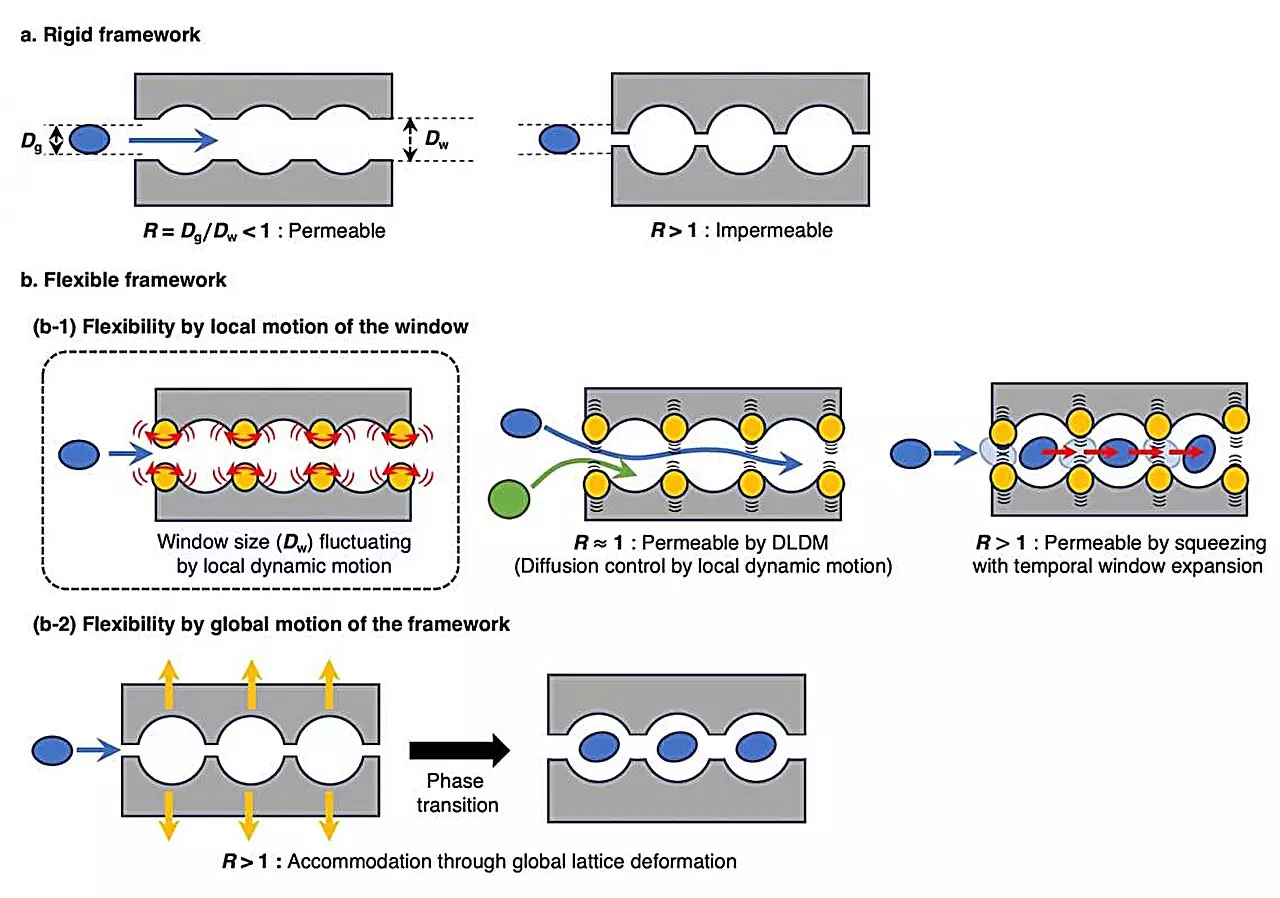The field of materials science is continuously evolving, with researchers uncovering fresh insights that challenge established knowledge. Recent work by a dedicated team has significantly advanced our comprehension of porous coordination polymers (PCPs), also known as metal-organic frameworks (MOFs). Their study, published in *Communications Materials*, reveals previously underappreciated characteristics of these materials—specifically, the “soft” nature of some early PCPs developed as far back as 1997. This newfound understanding not only enriches existing knowledge but may also unleash a plethora of applications in gas storage and various industrial processes.
At the heart of PCPs lies a sophisticated network comprising metal ions bonded to organic molecules, creating a labyrinth of tiny pores. This porous architecture is essential for trapping and storing gases, allowing PCPs to be likened to sponges that absorb gases in the way traditional sponges soak up liquids. According to Susumu Kitagawa, the lead researcher from the Institute for Integrated Cell-Material Sciences (WPI-iCeMS) at Kyoto University, the analogy encapsulates the operational essence of PCPs. These materials are not just passive vessels; their innovative structures provide them with remarkable versatility for various applications, including gas storage, filtration, and detection.
Traditionally, PCPs were categorized based on their rigidity or structural inflexibility. However, the introduction of the term “soft PCP” marks a pivotal shift in how these materials are understood. Hirotoshi Sakamoto, the first author of the study, elucidates that soft PCPs can adapt their shape in response to the gases they interact with. This pliability allows them to optimize gas storage efficiency by altering their internal framework, akin to a flexible sponge accommodating more liquid.
The initial understanding of PCPs overlooked the subtlety that this flexibility brings to gas adsorption capabilities. The old perception suggested that only recently developed PCPs demonstrated this quality, yet early iterations had inherently similar adaptive characteristics that modern methods have now illuminated.
Utilizing advanced analysis techniques, such as single crystal X-ray diffraction, the research team revisited some of the earliest PCPs, including the cobalt PCP known as Co-TG. Developed over 25 years ago, Co-TG was celebrated for its gas-adsorbing prowess. However, the new findings revealed that it possesses an unexpected versatility: a slight shape change that enhances its gas storage capacity. Ken-ichi Otake, a participant in the study, mentions that the remarkable adaptability of these early materials was grossly underestimated, undermining their significance in the evolution of gas storage technologies.
This modern examination not only resurrects historical knowledge but also serves as a reminder of how vital it is to leverage contemporary techniques to redefine past understandings. By uncovering the flexible characteristics inherent in these initial materials, the team unveiled how these foundations have been crucial in fostering advancements in PCP development.
The implications of these findings reach far beyond academic curiosity; they promise a reimagining of future applications, particularly in fields such as energy storage and environmental science. The ability of soft PCPs to efficiently capture and store gases positions them as promising candidates for improvements in carbon dioxide capture technologies and hydrogen storage systems, integral for clean energy solutions. Furthermore, the versatility in gas filtration could enhance processes across multiple industrial applications.
As Kitagawa emphasizes, reassessing historical developments within scientific research can open avenues for innovation. The eye-opening revelations regarding the early forms of PCPs illuminate the untapped potential for refining gas storage technologies. As the field progresses, this research could act as a catalyst for integrating advanced PCPs into sustainable solutions essential for addressing contemporary energy and environmental challenges.
The significant contributions from this research team not only revise the narrative surrounding gas storage materials but also inspire future explorations in this domain. Acknowledging the “soft” characteristics of early PCPs enhances our understanding of these materials’ evolution and equips us with valuable insights as we pursue advancements in energy storage and environmental monitoring. The lessons learned from the past will undoubtedly guide future discoveries, ensuring that the evolution of porous coordination polymers remains a dynamic and fruitful field in materials science.

